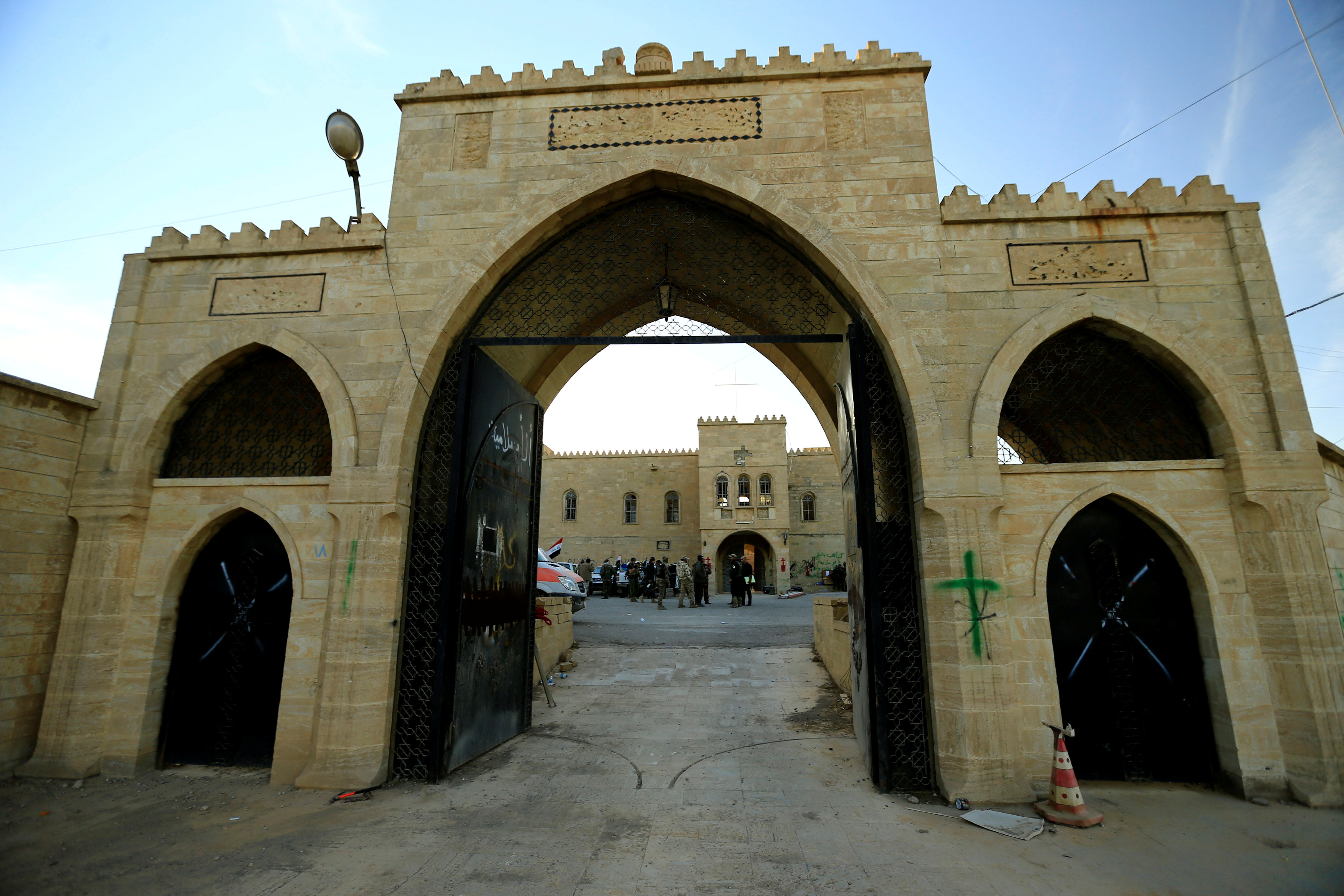
By Angus MacSwan
SHEIKH AMIR, Iraq (Reuters) – As people return home to Mosul and other areas of northern Iraq freed from Islamic State, homemade bombs and explosives laid on an industrial scale by the insurgents are claiming hundreds of victims and hampering efforts to bring life back to normal.
Houses, schools, mosques and streets are all booby-trapped, a big problem in West Mosul following its recapture by government forces this month after nine months of fighting.
Beyond Mosul, in villages and fields stretching from the Plain of Nineveh to the Kurdish autonomous region, retreating Islamic State fighters have sown a vast area with improvised bombs and mines as their self-proclaimed caliphate shrinks.
“The scale of contamination? There are kilometers and kilometers and kilometers of active devices, sensitive enough to be detonated by a child and powerful enough to blow up a truck,” Craig McInally, operations manager for Norwegian People’s Aid anti-explosives project, said.
While mines are usually laid in rows in open ground, improvised explosives in buildings are wired into household appliances such as fridges, heaters and televisions, primed to explode at the flick of a switch or an opened door, experts say.
Since clearing operations began last October, about 1,700 people have been killed or injured by such explosives, according to the United Nations Mines Action Service, which co-ordinates the clearing campaign.
By targeting civilians, Islamic State hopes to thwart a stabilization effort aiming to get people back to their homes, jobs and studies, rebuild infrastructure and reinstate government rule.
While the crisis lasts, Islamic State – whose strategy extends far beyond military operations – could thrive again, said Charles Stuart, charge d’affaires at the European Union mission in Iraq.
UNDER THE RUBBLE
Sheikh Amir, on the main Erbil-Mosul road at the line between Kurdish and Iraqi army control, is an abandoned, bombed-out ruin – one of hundreds of villages in such a state.
On a sweltering morning, Haskim Hazim, 37, was working with his brother and a few friends to repair his house, mixing cement and erecting a cinder-block wall.
Apart from his, only one other family out of a village that once had 120 Sunni and Shi’ite Muslim households has returned since it was recaptured from Islamic State in October, he said.
When he came back, his house, adjacent buildings and animal pens had been booby-trapped. “All were connected together. The bomb was a jerry can,” he said.
Many other houses had been rigged with improvised explosives. Islamic State had also dug tunnels in and around the village. A Mines Advisory Group (MAG) team had gone through and cleared most of that but it was still dangerous, he said.
A few weeks ago, a 12-year-old boy tending sheep nearby had picked up an object from the ground. It exploded and blew the fingers off one of his hands, Hazim said.
“We don’t know what is under the rubble,” said his brother, Jassan Abbas Hazim, 35, pointing to houses demolished by U.S.-led coalition air strikes and Islamic State.
Their families were staying in rented rooms in Erbil and Qaraqosh, the men said.
“There’s nothing here, no school, no medicine, no water – just a well,” Hazim said. “I hope other people come back. If they don’t, then what?”
In Qarqashah, in the same area, two returning families were killed when the pick-ups they were driving in triggered a mine. Today, only one family of shepherds lives there full-time, the NPA’s McInally said.
In nearby Kaberli, about 20 families have returned since February after NPA teams cleared schools and houses.
The EU’s Stuart gave the example of a schoolroom in Fallujah where explosives were packed beneath a classroom’s floorboards to kill children as they went to their desks. It was discovered in time.
A big problem is civilians taking matters into their own hands and trying to clear their homes themselves, Stuart said, and children playing in the streets are particularly vulnerable.
CRUSH NECKLACES
In the NPA office in Erbil, McInally, a U.S. army veteran who has cleared explosive hazards in countries from Colombia to Afghanistan, showed off a collection of devices, many fashioned from rusty bits of metal.
The most common is a “pressure plate” – two long plates held apart by spacers, one connected to a negative lead the other to a positive lead. When trodden on, the circuit closes and detonates the main charge.
Other devices, so-called “crush necklaces”, are like miniature pressure plates made from small metal or plastic clips. They are difficult to find with metal detectors and hard to spot visually.
“This is an industrialized assembly line. These are guys who are educated. They understand electronics,” McInally said.
The bomb-makers are also learning from clearers’ techniques and are adapting to them, he said.
The anti-explosives campaign involves Iraqi and Kurdish authorities, the United Nations, and an array of NGOs and commercial outfits. It extends beyond decontaminating sites.
Community liaison teams give mine-risk awareness lessons to hundreds of people.
At the Kadiz Abdulajad School in West Mosul, recently reopened after three years of Islamist rule, head teacher Thekriat Mohammed Hussein said the children were given lessons in mine and explosives awareness as part of the curriculum.
MAG is also training people to handle explosives-clearing in their own communities and civilians are being trained as first-responders to give emergency medical treatment to blast victims.
Bureaucracy and funding can hinder the effort though and resources are insufficient, clearers say. For 2017, UNMAS has received $16 million of the required $112 million.
And the liberation of Mosul signifies the only the latest phase of the scourge. Iraq is peppered with “legacy” explosives going back to the Iran-Iraq War, former leader Saddam Hussein’s war against the Kurds, and the U.S.-led war following the 2003 invasion. Islamic State militants are also expected to plant new areas as they fall back to the Syrian border.
It could take decades to clear them, experts say.
(Editing by Louise Ireland)

